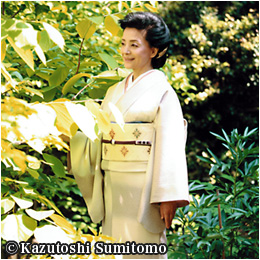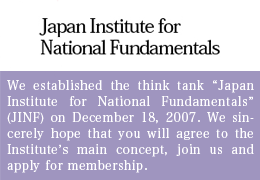JAPAN SHOULD SEIZE COMING TPP NEGOTIATIONS SETTLEMENT AS GOLDEN OPPORTUNITY TO REJUVENATE ITS AILING AGRICULTURE
In the highland lettuce farming village of Kawakami in Nagano Prefecture, central Japan, the average farmer earns roughly 25 million yen (approximately US$208,000) a year. The village has managed to keep its next generation on the farm, while also attracting young ladies from cities to marry its bachelor farmers. Its success as a thriving farming village is due largely to its escape from the clutches of the region’s agricultural cooperative, according to Taro Yayama, a popular commentator well-versed in Japanese agricultural affairs. Explains Yayama:
“The agricultural co-op threatened to suspend its water supply to the first farmer in Kawakami who chose to grow lettuce. Instead of being intimidated, however, the farmer retorted: ‘Go ahead. But if you do, I will file a suit.’ Now, everybody recognizes the success this village has since achieved. It was a serious setback for the co-op, which had contrived to control the farmers.”
With the bill on agricultural reform that the administration of Prime Minister Shinzo Abe approved February 9, Abe saw to it that his government will not allow the powerful Central Union of Japanese Agricultural Co-operatives (JA hereafter) to continue exercising its long-held right to audit subordinate co-operatives across Japan. In four years, JA is slated to become a general nonprofit foundation, deprived of its special entity status specified by the Agricultural Cooperative Law (ACL) and its authority to audit respective regional cooperatives, which in turn audit individual farmers. Kazuhito Yamashita, a leading expert on agricultural matters who serves as Research Director at Canon Global Strategy Institute in Tokyo, observes:
“There was nothing JA wanted to preserve more badly than its auditing right guaranteed under ACL, because it was its most important means of controlling the rank and file members of agricultural cooperatives across Japan. In order to remove JA from the protection of this law, Abe went all out to resort to a new strategy, warning that the government would restrict the number of associate members of cooperatives under the aegis of JA.”
Abe’s strategy worked because the JA’s primary concern has shifted over the years from farming to banking and insurance for non-farmers as well as full-time and part-time farmers. Associate members outnumber regular members 5,170,000 to 4,670,000. JA’s associate members deposit their salaries with JA, buy their insurance from FA, and also purchase a wide variety of daily necessities from JA. Money collected by agricultural co-ops across Japan is siphoned to the JA group’s banking headquarters, which now boasts \90 trillion (US$75 billion) in deposits. Technically, it is the second largest mega-bank in Japan after the Mitsubishi UFJ Financial Group, which is worth \125 trillion (US$104 billion).
JA’s lendings to farmers amount to 2% of the total at most. Approximately 30% is allocated for private loans, such as housing loans, to associates, while the remaining 70% is used for financial investments in Japan or overseas.
“If the number of associates was slashed sharply, regional agricultural co-ops would be hard put to stay in business,” notes Yamashita. “Confronted with a condition that appeared absolutely impossible to accept, regional co-ops decided to forgo the right to audit their members, rather than losing associates drastically.”
Multiplier Effects Expected
The government appears to have managed to drive a wedge between the core and the rank and file members of this mammoth agricultural lobbying body. Only can someone like Yamashita, who himself was once a bureaucrat at the Ministry of Agriculture, Forestry, and Fisheries, see clearly through such political horse-trading. In point of fact, he was so strongly reform-minded that he was constantly at odds with the ministry, which subsequently forced him out.
Under present circumstances, regional agricultural co-ops are faced with a compelling call for change. While some financially stable farmers have been able to cultivate new supply and distribution channels on their own, most farmers have had to resort to regional co-ops in order to sell their products or purchase supplies such as fertilizers, agricultural chemicals, and farming appliances. Under JA’s directives, regional co-ops have walked the easy path of merely restricting the scope of the members’ operations while not doing much to contribute to their livelihood. But now the overall structure of Japanese agriculture will undergo a sea change.
In order to survive, Japanese agricultural cooperatives must work with the best interests of individual farmers in mind—not that of JA—walking in step with farmers who have achieved success by challenging new possibilities. In this respect, the new agriculture reform bill will be able to link motivated agricultural co-ops with like-minded farmers, creating desirable multiplier effects.
Another possible approach that is a sensible option for regional co-ops will be to work closely with cooperative associations in their vicinity. Yamashita has this to say:
“A workable approach will be for agricultural co-ops to separate farming from their businesses altogether and transform themselves into regional cooperative associations. An agricultural body can truly support farmers only when it is backed by corporations supporting the spirit of independence and self-respect of full-time farmers. An agricultural cooperative that fails to secure such backing had better stay away from agriculture.”
Assuming that Japanese agriculture will indeed undergo a much-awaited change, will it survive and become a growth industry once the Trans-Pacific Strategic Economic Partnership Agreement (TPP) is reached, as expected in May? Yamashita is optimistic, remarking:
“Let’s first look at beef imports. Japan will reduce the beef tariff, which now is 38.5%, to 9% or 10% over a period of some ten years. Will this measure devastate livestock farmers in Japan as some quarters fear? I don’t think so.”
Here in a nutshell is what Yamashita has to say about his prediction: Previously, beef imported at \100 (US$.83 dollars) rose to a landed cost of \138.5 (US$1.15) after import duties were applied. However, since the yen’s value has declined by some 50% over the last three years, that same \100 is now \150. In other words, Japanese livestock farmers have already dealt with landed cost fluctuations greater than what they will see when the duty on beef is reduced from 38.5% to 10%. The reduction of the beef tariff will not affect Japanese livestock farmers that seriously. Besides, it will be a long time before the tariff will actually be reduced.
“The ‘Wagyu’ (Japanese beef) industry has evolved amazingly. A fertilized egg created from the sperm of a Wagyu bull and the ovum of a Wagyu cow is transplanted to a Holstein cow. The delivery of a Wagyu calf, which is clearly smaller than a Holstein calf, will be less burdening on the Holstein cow. It will also enable her to give more milk, allowing the calf to grow up in better health. Japanese livestock farmers can vigorously promote ‘Wagyu’ exports backed by superb breeding technologies established domestically. By reducing feeding and production costs, they will be able to increase international competitiveness. In addition, because Japanese beef and American beef can perfectly exist alongside each other in their own separate niches, I am confident that TPP will not adversely affect Japan’s beef industry.”
Don’t Be Fooled by the Magic of Numbers
Pork imports are more complicated. The US wishes to export to Japan primarily lower-quality pork used in ham and sausage that would have lower prices but higher duties. Meanwhile, for some strange reason, Japanese pork importers want to keep the tariff to “a minimum standard of 4.3%” by importing a combination of higher-tariffed luxury products with lower-tariffed low-range products.
“Those in the pork importing business have closely analyzed how the tariff system works, and understand how to deal with it. So, even if the tariffs on low-quality products, on which higher tariffs are levied on paper at present, should be lowered several years from now, I wonder how significant the differences would be from today, when we are already dealing with a significantly low minimum tariff rate of 4.3%.”
Lastly, here is how Yamashita views rice imports:
“One shouldn’t be fooled by the magic of numbers. What exists now is a simple tariff of \341 (US$2.84) on a kilo (2.2 pounds) of imported rice, while the average wholesale price of domestic rice is \200 (US$1.67) per kilo. This means that a kilo of foreign rice would still cost \341 in Japan, even if it is “imported” absolutely free. In the Japanese market, our tariff system is so structured that even the cheapest foreign rice ends up being more expensive than Japanese rice. Actually, since Japanese rice is already protected by its superb quality, the Japanese government should have agreed to lower the rice tariff. Instead, however, it has chosen to keep its rice tariff in place and boost US rice imports within the minimum access quota. Rice imports are the only matter with which Japan has not been successful in TPP negotiations.”
Japan, which is annually importing 770,000 tons of rice from the US within the minimum access quota, is moving ahead to import another 50,000 to 100,000 tons per year. Yamashita logically contends that a wiser policy should have been a decision to lower the rice tariff, rather than agreeing to increase imports when it already has more rice than it can consume.
TPP is still under negotiation. One only hopes that the Japanese representatives will negotiate rationally and multilaterally so as to help achieve future prosperity for Japan through a proactive—and not defensive—agricultural policy.
(Translated from “Renaissance Japan” column no. 646 in the March 12, 2015 issue of The Weekly Shincho.)








